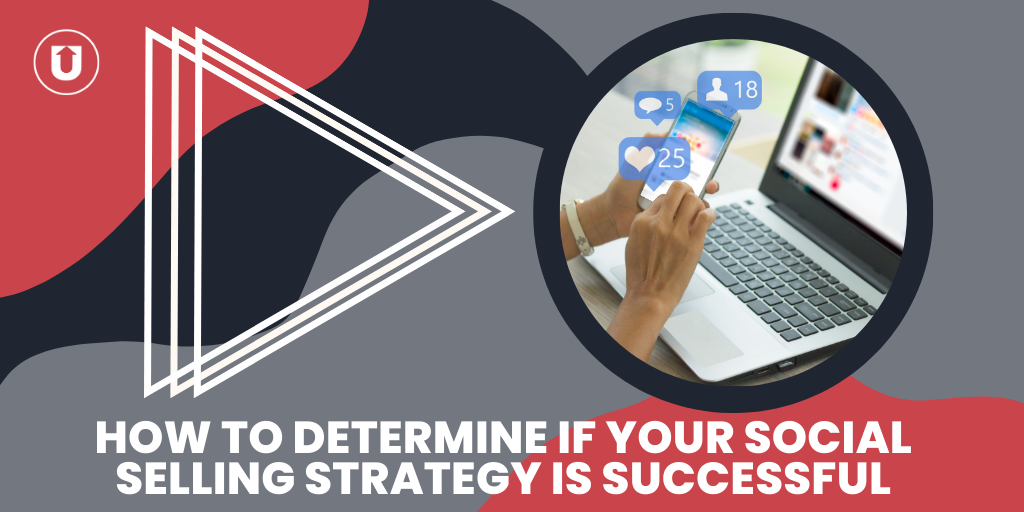What’s the Difference Between Social Selling and Employee Advocacy? - A Conversation with Denim Social’s Nola Morris
.png?width=2240&height=1260&name=637cf522a87e08aeda29ca88_Blog%20Banner%20for%20Website%20Content%20(5).png)
People have been selling for years, and there have been countless strategies created to demonstrate the value of what you have to offer.
But as we have entered the digital age we all live in, those sales methods have also had to adapt to include where most everyone spends a chunk of time: social media.
People are using social media just like they would Google or any other search engine, and if you don’t have a robust presence, new clients may not find your business or service in a few years.
But building a social media presence doesn’t have to feel like a massive undertaking.
You don’t have to be an expert in everything digital to foster a consistent and valuable social media presence.
We talked with Nola Morris, VP of Strategy at UpContent partner DenimSocial, about the differences between social selling and employee advocacy, how the line can blur, and how both can drive meaningful digital relationship building.
Social Selling
Social selling is using social media as another avenue to reach clients and prospects.
It’s bringing your typical in-person sales activities to the digital world.
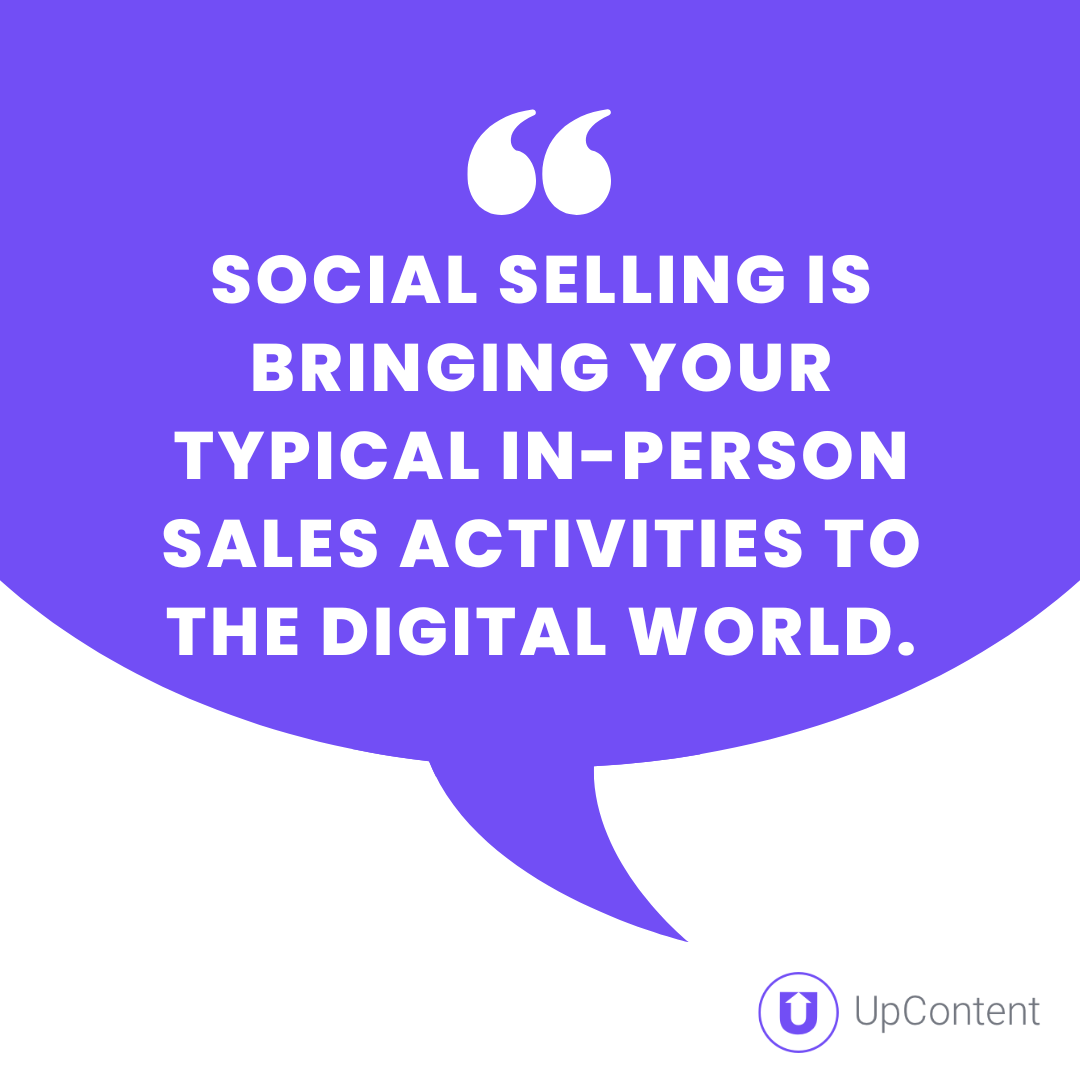
Maybe you’re frequently running into a potential client at your local coffee shop, and you naturally get to know each other while standing in line.
You get to know what they do, and they get to know what you do; you get to know one another’s families.
Maybe the two of you share a hobby!
And then next year, that potential client comes to you and says, “Hey! I remember that you are pretty knowledgeable about business financing, and I might need you to help me with a loan.”
Social selling is using social media to do ALLLL of that. Coffee optional.
“It's essentially using social media as a true sales tool,” says Nola. “Social media is one giant community of real people having real conversations and looking for real advice. Joining those conversations should be no different than joining the in-person ones.”
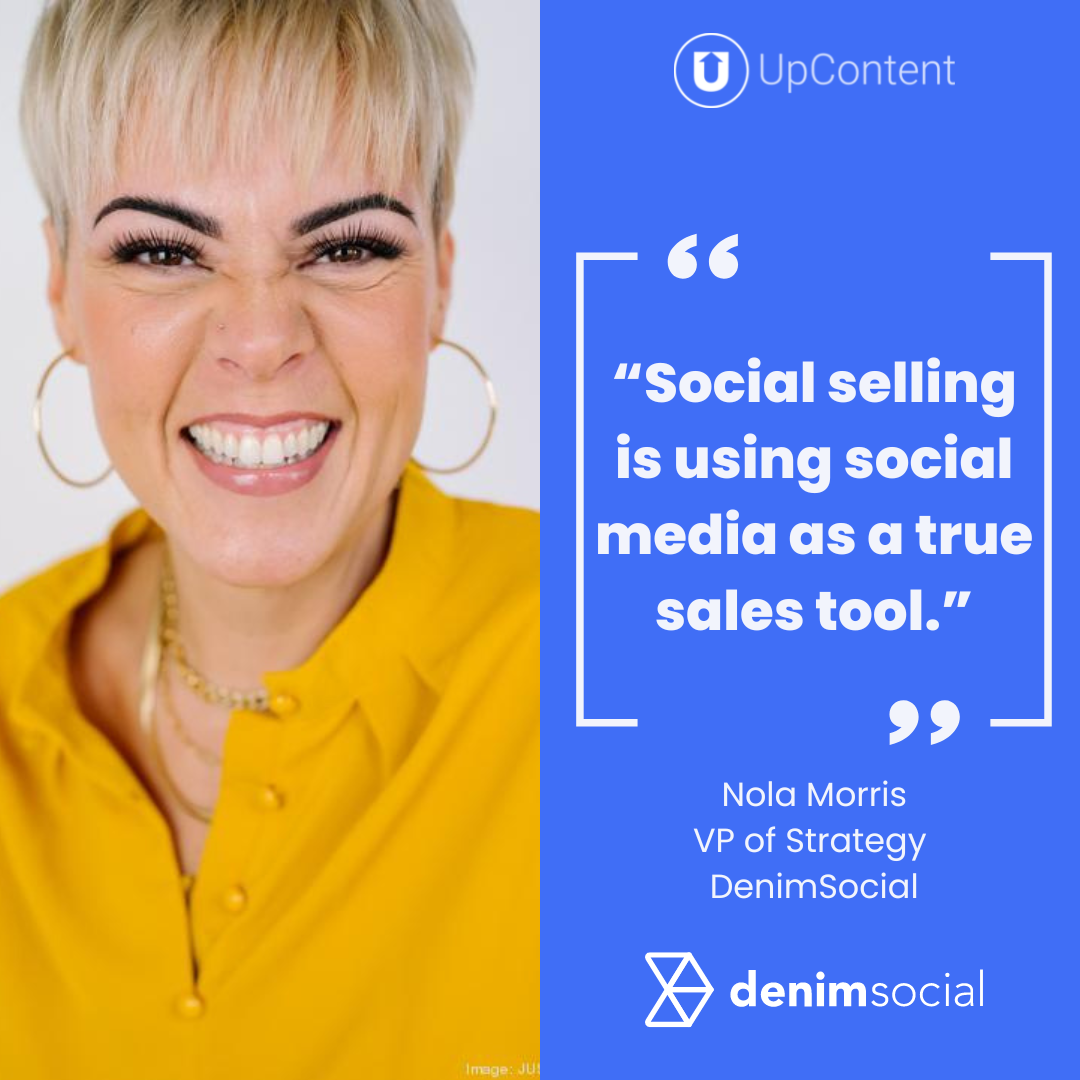
What does Social Selling look like?
So what does social selling look like?
It starts with a consistent presence with thoughtfully shared content.
You can use a combination of created and curated content for this, and you shouldn’t overthink what you’re saying.
Personal Content
Share a picture of you fishing and discuss why you love it. Or share a photo of your family at Christmas time!
People do business with you because you’re YOU. If you’d share it with them in person, then consider sharing the same on social.
Lifestyle Content
If there is something you value or enjoy doing, you can share content about that!
Maybe you come across an article about a new local restaurant, fun things to do in your area, or a related (but not competing) business opening.
This type of content could be you snapping a picture eating at the new restaurant or if you aren't comfortable letting your phone eat first, curating an article discussing a cause you care about or a non-business topic that matters to you and sharing it with your thoughts or opinion in the caption.
Thought Leadership Content
You can write your own, AND this is an excellent area to curate content from other thought leaders in your industry.
Sharing other people’s content creates credibility while establishing your business as the go-to place for information regarding your industry.
Your audience isn’t always looking for your answer, but they are looking for someone to help them find the best solution; why not be that someone?
Employee Advocacy
Employee advocacy is social media content focused on showcasing the merits of a brand or company - as well as the collective interests of those who work there.
“Employee advocacy is empowering teams with content they can share that speaks to what their company is up to. It could cover topics such as recruiting, annual reports, DE&I, social responsibility, and other company milestones,” Nola says.
As an employee of a company, you’re advocating that company to your networks to educate about that company, what it’s like to be a part of that team, why people should be excited about what the company is doing, and what open opportunities exist to join the group.
Employee advocacy is different from social selling because the objective is to increase brand awareness and equity through the voice of an organization’s employees.
Whereas social selling is focused on the development of a network of authentic relationships where you are seen as an authoritative resource they can trust when in need of services like yours.
An Example of Employee Advocacy
Social media post examples of employee advocacy could be sharing why someone chose to work at a particular company.
Other posts can highlight the company’s new inclusion efforts, job postings, or trends occurring in the industry the company serves.
For example, maybe you’re a high-end jewelry sales rep, and naturally, you would want to share content about the company you represent.
You would want to talk about how your diamonds are ethically sourced or about the amazing designers on staff that create these beautiful pieces you’re selling.
Others within the company are excited to share these pieces also, regardless of whether they have sales responsibility.
Where the Line Blurs
But there is a tricky blurry line between social selling and employee advocacy.
“Many times, social selling includes elements of employee advocacy,” Nola says.
“There are usually layers of employee advocacy woven into social selling because sharing about my career or the company I work for is part of my authentic story. The one I’d share if we struck up a conversation in the line at Starbucks," she says.
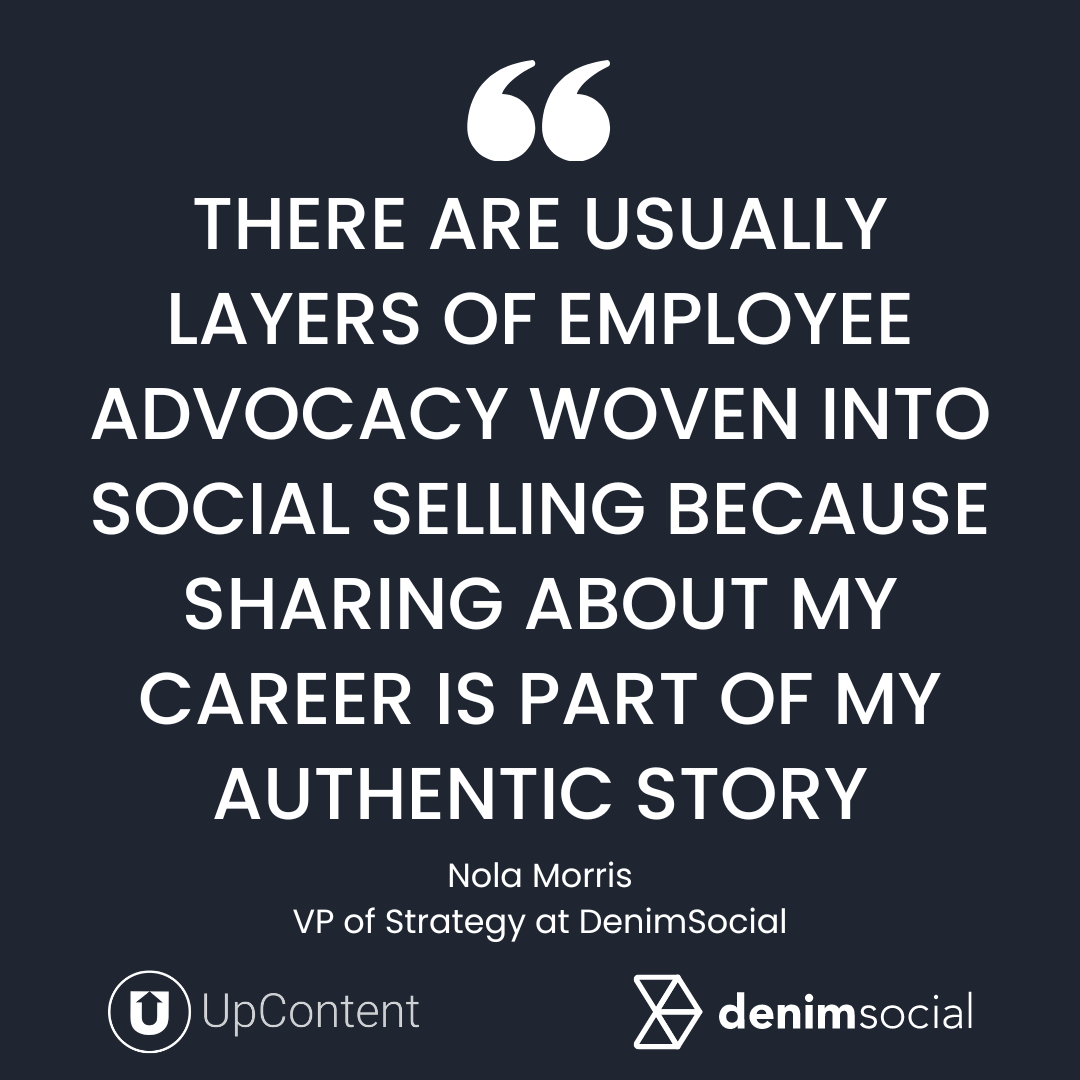
Remember earlier when you were chatting with that prospect in the coffee shop?
Naturally, once the conversation turns from complimenting their sweater and you both talk about where you work, you tell them about your company. So employee advocacy is part of that.
But it turns into social selling when you change your focus from broadcasting a message for all to hear to responding directly to individuals that engage with you, begin building a relationship by giving first before asking, and serve as a resource for them when they begin to struggle with a problem you are equipped to solve - when they are ready to solve it.
Social selling, like all sustainable sales strategies, isn’t going to change your pipeline overnight.
But by positioning yourself as a consistent and trusted resource, those who are disciplined in this strategy realize 45% more sales opportunities, are 51% more likely to hit their quota and have a 78% chance of outselling their peers who don’t use social media (LinkedIn Sales Solutions).
Why Both Can Power Meaningful Digital Relationship Building
In an intermediated business model like in the financial services industry, a customer rarely buys directly from the brand or the company designing the product.
Humans are driving business on a local level, building trust, deepening relationships, and guiding you in your decision.
You know them, like them, and trust them, which makes you want to work with them - and they with you.
Part of how you can begin building those relationships is by sharing more about the merits of the company you work for and the trends happening in your industry that would be valuable for others to understand.
Let’s say you’re a mortgage lender just starting to actively use social media as a social selling tool.
You can begin by posting about your company and about changes in how homeowners should think about their mortgages.
These are great pieces to share when starting this “intentional” journey as showcasing your association with a company that can deliver on their needs as well as your knowledge of their challenges and concerns is the foundation of social selling.
Your followers will see you writing or sharing about your company, and they will think, “Oh, this person really loves the company they’re writing mortgages under. They must love what they do.”
They will start seeing you share about your family going on vacation, sprinkled in with posts on how excited you were to help that recent couple refinance their mortgage so they could leverage their home’s equity, and curated articles on mortgage rates in the changing market and how to think about their impact on their current situation.
This is all part of the social selling journey because that would be happening in real life if you were to have this discussion in person.
Your best conversations with prospective clients include far more than just mortgage rates and loan options - so ensure your digital presence reflects the same.
In the content marketing world, the blending of promotional, lifestyle, and thought leadership content - as well as that which was created by your organization and others, is called a content mix, and it’s proven to be 2X more effective than created content alone.
“Social selling and employee advocacy are tactics to help build relationships. Employee Advocacy ends with the audience better understanding your company and those that work there. Social Selling takes this a step further to build trust in a way that drives revenue." says Nola.
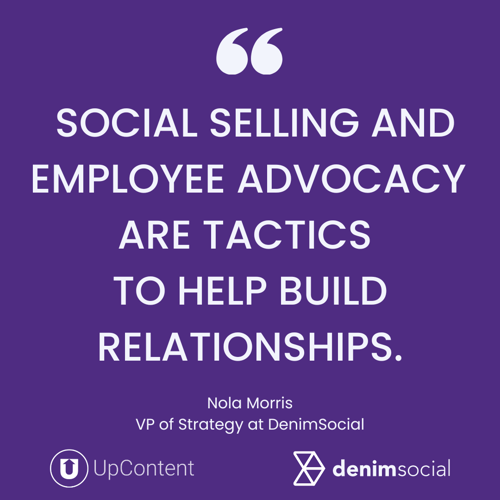
Next Steps for Your Social Selling and Employee Advocacy Journey
Consistently sharing valuable information is critical for ensuring success, particularly in the digital world.
But discovering and distributing this information doesn’t have to be exhausting or difficult..
Quickly sharing something personal or a piece of relevant curated content can beef up your social media presence and keep your name in the front of people’s minds as the go-to for information.
If you’re in financial services and are interested in how Denim Social can transform your social selling efforts, you can request a demo with one of their experts today!
If you’re in another industry but want to get started with social selling or have other questions on curated content, talk to one of UpContent’s content curation experts today!
Check out these related articles!


